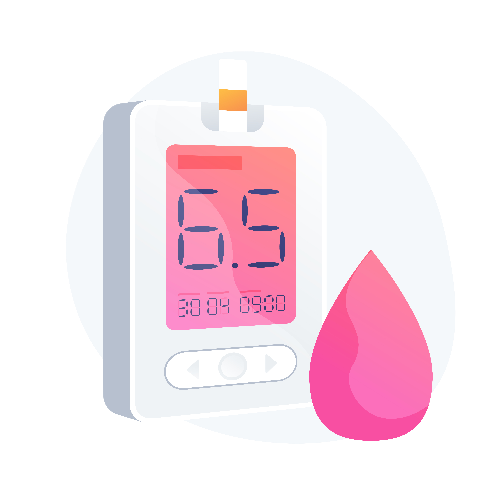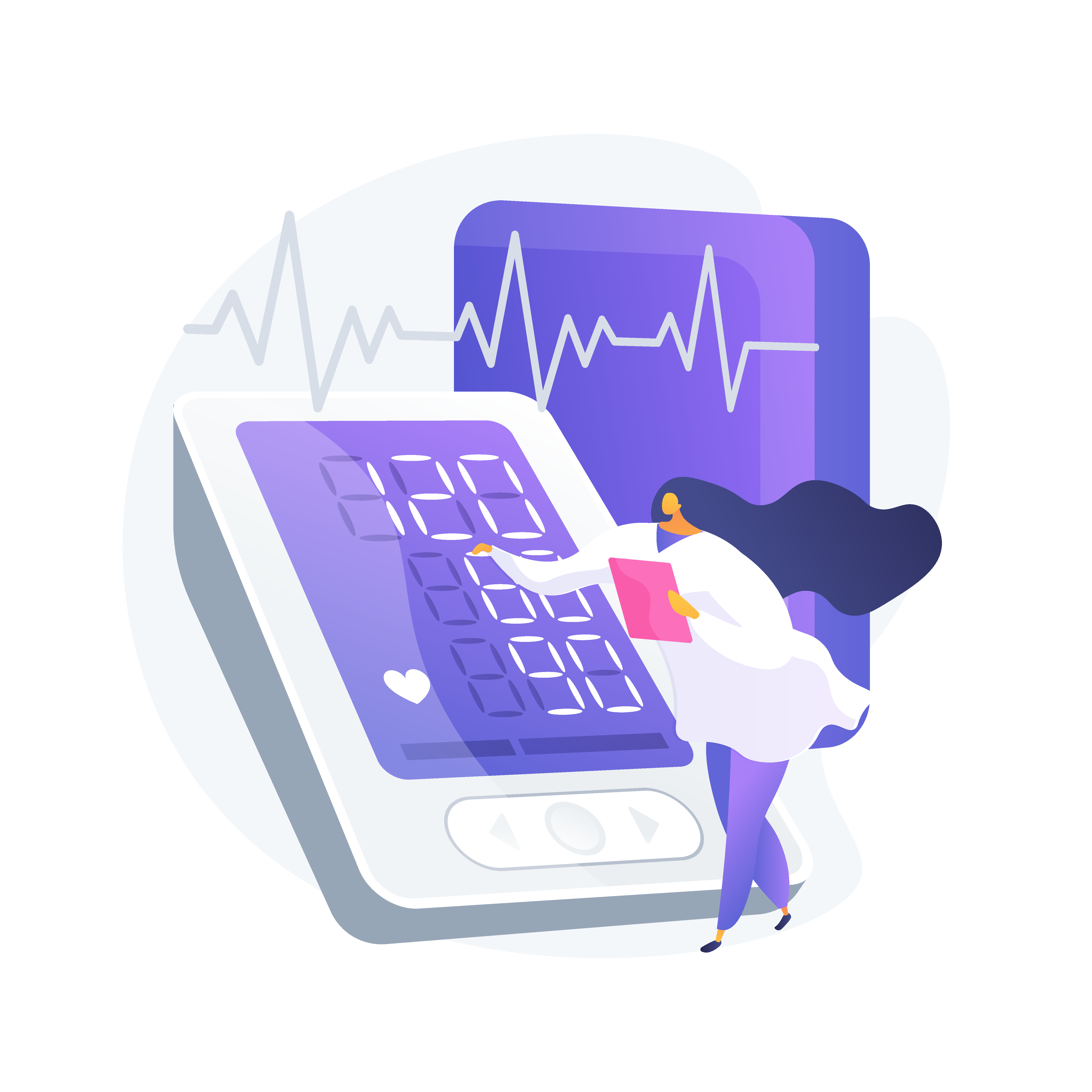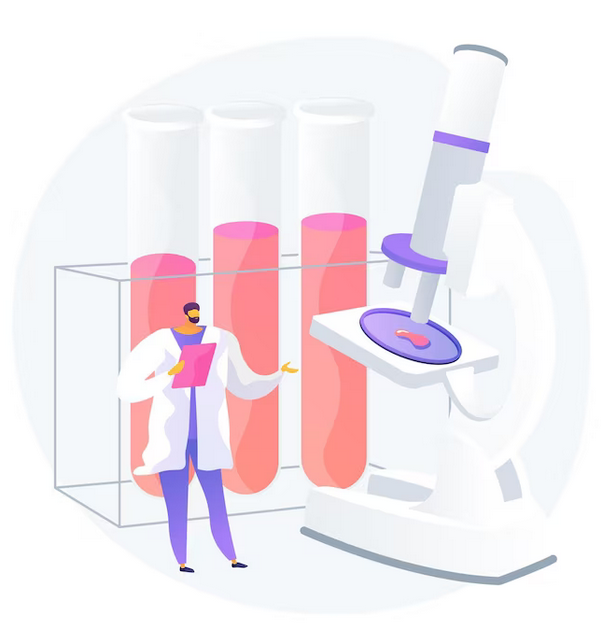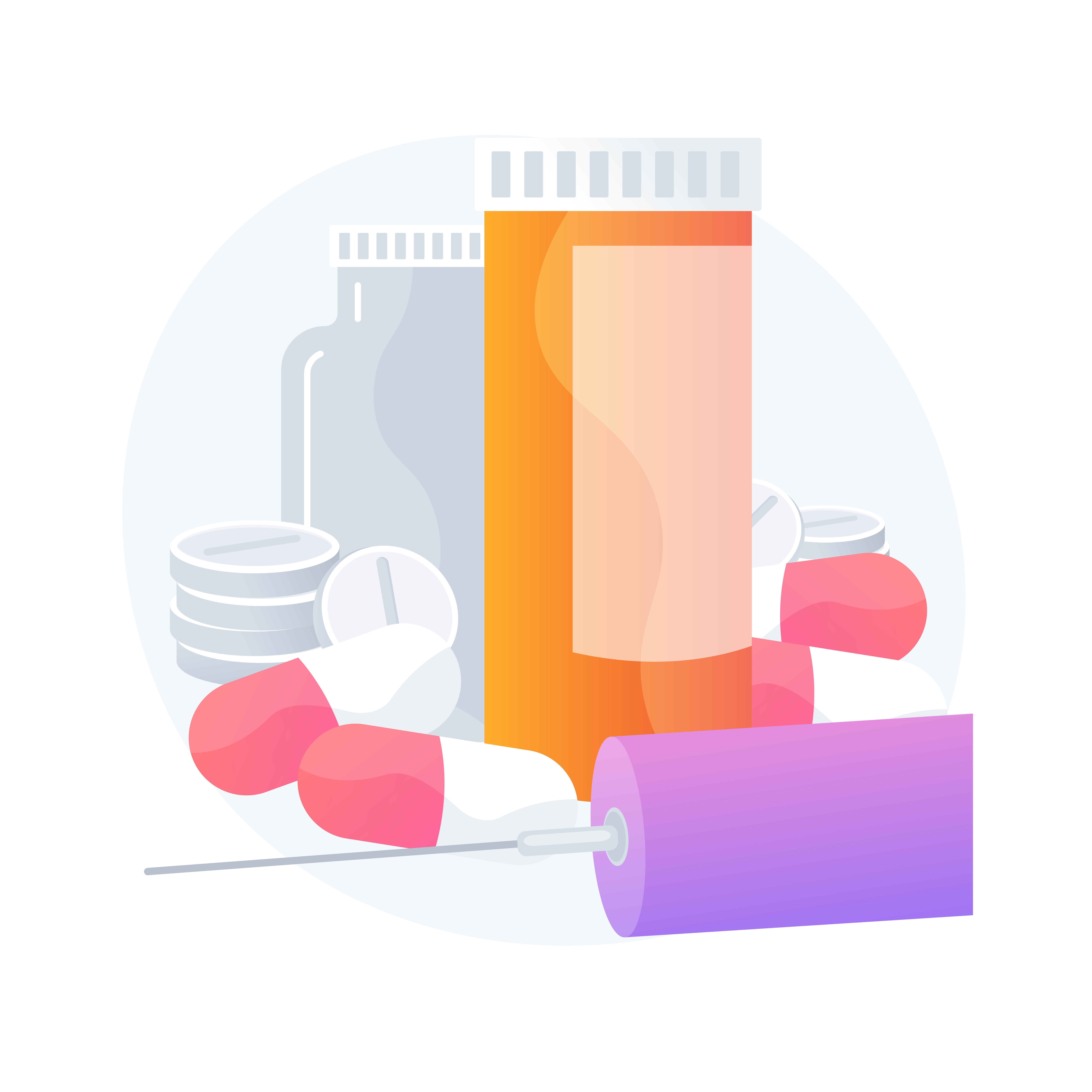Blood Sugar
Blood Sugar Checks
Blood glucose or blood sugar monitoring is a way to help keep blood sugars in an individual’s target range. Testing is an important part of monitoring and can help to prevent diabetes complications. It is a good idea to write down where the blood sugar meter is kept and what the target range is for the person you support.
When supporting someone to go to an appointment at a Diabetes Clinic, make sure to bring their meter with them or their logbook so diabetes team can look at their levels.

When to Check Blood Sugar Levels
This is different for each person and will depend on how they manage their diabetes.
In general, a person taking insulin will check
- When they wake up – this measures ‘fasting’ sugar levels
- Before a meal
- 2 hours after a meal (to see the effect of the meal or mealtime insulin dose)
- Overnight: 2 -3am (do this occasionally if you are on a basal insulin)
Extra times to check blood sugar levels are:
- Before driving any vehicle – you need to be above 5.0mmol/L to drive
- When experiencing a hypo or low blood sugar
- Before and after any physical activity (e.g. walking, gardening, exercise)
- When feeling unwell
- Whenever concerned about diabetes
What level should blood sugar be?
Each person is different. Their doctor will have told them what their target range is.
Usually it is between 5-10mmol/L but can be different for everyone.
Why are blood sugar levels changing a lot?
Sometimes blood sugar levels can fluctuate. Some common causes for sugar levels to be outside of target range can be:
- Stress
- Missed meals
- Eating more food than had insulin for
- Having too much insulin for the food they ate
- Drinking too much alcohol
- Doing more or less exercise than normal
- Sickness
If the blood sugar level doesn’t sound right, make sure to check that:
- The strips haven’t expired
- The strips were stored in dry place with the cap on (if in a container)
- There was enough blood on the strip
- Did the person you support have clean hands? (sweet foods on fingers can give higher readings)
- Is the meter too hot or cold?
- Is the battery low?
It’s ok to repeat the blood sugar check if you think it’s wrong.
How to check Blood Sugar levels
Glucose levels can be monitored using a blood glucose meter, Flash Glucose Monitor (Flash GM) or Continuous Glucose Monitor (CGM).
Blood glucose meter
There are many different types of blood glucose meters which each offer their own differing features. It is important to check that the meter is clean, the battery is not low, and strips are in date. Strips should be stored in their packaging at room temperature (keep lids on containers, only open foil packets right before use).
How to perform a blood glucose check with a meter
Important things to remember:
Support – Identify what assistance the person you are supporting requires with their check. Some people need no or little support while others require more support.
Gloves – Depending the support you provide, you may prefer to wear gloves.
Lancet – Disposable lancets are to be used only once before being discarded into a sharps container.
Sharps container – use this to dispose of the lancet (and insulin injection needles if needed). Once full, ensure the container is closed fully and taken to a local needle recycling place.
The following steps outline how to check blood glucose, but may varying depending on the meter you have
- Wash and dry hands (food residue can affect results)
- insert strip, this should turn on the meter
- Select a finger to prick. It’s important to rotate the spot/finger
- Prick the side of the finger with the lancet, you may need to squeeze gently to get blood
- Line the blood drop up with the end of the strip, it should beep/change pictures when it has enough
- The meter will take a few seconds to measure the blood. The number will appear on the screen
- Record the number in the person you support’s preferred way
- Dispose of the lancet using the sharps container
If you have trouble getting enough blood you can try
- A different spot or finger.
- Warming the person’s fingers up by rubbing them together or running them under warm water
- Increasing the length of the lancet. This makes the lancet needle go in further. Take care not to increase too much, as the deeper the needle goes the greater the likelihood of causing pain.
How can I record blood glucose levels?
Keeping a record of your blood glucose readings can help manage your diabetes. Share your readings with your diabetes health care team and ask them how to interpret your readings to make decisions about your diabetes management.
There are different ways you can record blood glucose levels
- A paper diary. These are often available from diabetes teams
- Phone apps. There are many apps available for free. Some meters can Bluetooth glucose level directly to a smart phone via an app.
- Blood glucose meter memory. Some health care providers are able to download the information from a meter. If this is how the person you support shares their levels with their diabetes team it is important to bring their meter to their appointments for downloading.
CGM and Flash GM
Flash Glucose Monitoring (flash GM)
Flash glucose monitors use a small sensor inserted just under the skin to record sugar levels. The sensor needle is contained in a small disc that is typically attached to the back of the upper arm, and holds the sensor in place. To get a reading, hold the device used to scan over the sensor.
The sensor used in flash glucose monitoring can stay in place for up to two weeks, but be aware that the person you are providing support for may find the sensor to be itchy or uncomfortable and may try to remove it. Keep this in mind when discussing and/or selecting blood sugar monitoring options with the person you support.
The sensor must be scanned at a minimum every 8 hours, otherwise previous unread data stored by the sensor will be lost. Upon scanning, your device will show you the last 8 hours of blood sugar data, including a trend arrow to demonstrate the overall changes in blood sugar levels. You and the person you support can also use the device to set alarms for when their blood sugar goes outside their target range.
It is important to know that flash GM does not measure blood sugar levels, and it will therefore be necessary to continue to use finger pricks under certain circumstances.
Continuous glucose monitoring
Much like flash GM, continuous glucose monitoring (CGM) continuously monitors blood sugar levels through a sensor, containing a needle inserted under the skin. There are different brands available to choose from, and depending on the brand the sensor can stay in place for seven or more days. Much like the flash glucose monitoring sensor, the person you support can find this sensor itchy or uncomfortable.
The CGM sensor triggers an alarm if the person’s blood sugar changes rapidly, which can be useful if the person can’t feel their blood sugar change or is unable to express that they feel their blood sugar changing. CGMs may also require calibrating up to twice a day, with comparison to finger pricks on a traditional meter.
When selecting a blood sugar monitor, it is important to speak with a health professional together with the person you support to choose which method is best for them. Furthermore, they may be eligible for subsidised access to CGM or flash GM through the NDSS, though they must first be registered with the NDSS. When using a CGM or flash GM, if the result doesn’t look right (e.g. the person you support has said they feel like their blood sugars are high but the readings are normal), a blood sugar meter should be used to check the results. If you have concerns that a meter is not providing correct measurements, you can ask a diabetes educator or pharmacist to help you check the accuracy of the meter.
Low Blood Sugar
Low blood sugar, also referred to as hypoglycaemia, occurs when a person with diabetes has too little sugar in their blood. A low blood sugar level is typically lower than 4mmol/L. It should not be confused with hyperglycaemia, which refers to high blood sugar.

Causes and Signs of Low Blood Sugar
It is important to monitor blood sugar levels, as low blood sugar can be very damaging to a person’s health. If the person you support has low blood sugar, supervision is needed until the person is fully recovered. A low blood glucose is a medical emergency and can result in diabetic coma if left untreated.
Causes of low blood sugar:
- Missed or delayed meal
- Not eating enough carbohydrates
- Using too much insulin
- Engaging in extra strenuous or unplanned activity
- Exercising more than usual
- Vomiting or diarrhoea
- Breastfeeding
Possible symptoms of low blood sugar:
- Dizziness
- Sweating
- Appearing pale
- Headache
- Blurred vision
- Irregular or fast heart beat
- Feeling hungry
- Changes in mood (e.g. crying)
- Shaking/trembling
- Irritability or nervousness
- Confusion
- Difficulty concentrating
More severe symptoms:
- Confusion, unusual behaviour or a mixture of both.
- The inability to complete tasks they would normally be able to complete.
- Loss of coordination.
- Slurred speech.
- If asleep, night terrors.
- Loss of consciousness.
- Tremor in hands.
If left untreated, can result in coma or death.
Management of Low Blood Sugar
Treatment of low blood sugar:
After measuring blood sugar and determining that it is under 4mmol/L, follow these steps:
- Give the person about 15 grams of quick acting carbohydrate or sugary food or drinks, examples include:
- 4 sugar tablets.
- 6-7 jellybeans.
- half a can of a full sugar soft drink.
- 2-3 teaspoons of sugar or honey mixed with water.
- 100mL of Lucozade.
- A tube of oral sugar gel.
- Glucagon kit if person is prescribed same.
- Wait 10-15 minutes before checking blood sugar levels again. If levels remain under 4mmol/L, repeat the first step. Continue to repeat steps 1 and 2 until blood sugar levels return to normal before proceeding to step 3. If BGL levels are not rising after 2 intervention attempts, or BGL’s have dropped further after 1st intervention medical help should be sought immediately.
- Make sure the person gets a snack or meal containing longer acting carbohydrate to keep blood sugar levels stable, examples include:
- A piece of fruit.
- A tub of yogurt.
- A meal containing rice or pasta.
- A drink of milk, full fat sugary drink e.g. coca cola.
- A slice of bread with cheese.
- 2-3 pieces of dried fruit.
- Measure blood sugar levels again if possible. If symptoms improve, the person may resume normal activity after 20 minutes
- Monitor the person for one hour post hypoglycaemia after BGL’s have been corrected.
When to contact a doctor:
If BGL levels are not rising after 2 intervention attempts, or BGL’s have dropped further after 1st intervention medical help should be sought immediately.
If the person with low blood sugar is unconscious, convulsing, or unable to swallow this considered is a diabetic emergency. Do not try to give the person anything to eat or drink, put them into the recovery position (laying down on their side), and call an ambulance for help (dial 000).
High Blood Sugar
High blood sugar is also referred to as hyperglycaemia (not to be confused with hypoglycaemia, which refers to low blood sugar).
High blood sugar is when a person with diabetes has too much sugar in their blood. A high blood sugar level is typically above 15mmol/L.

Causes and Signs of High Blood Sugar
What causes high blood sugar?
High blood sugar in people with type 1 diabetes usually happens when:
- Not enough insulin was taken for the food eaten
- The person is sick
- Taking some medications such as steroids
- People feel stressed or excited
- Drinking alcohol
High blood sugar in people with type 2 diabetes usually happens when:
- Eating high carb goods
- Not exercising
- people are sick
- Taking some medications such as steroids
- People feel stressed or excited
- Drinking alcohol
Signs of high blood sugar:
When someone’s blood sugar is high, they might be able to tell you they feel their high blood sugar. You can also look at for these signs:
- Feeling tired or lethargic
- Feeling grumpy or irritated
- Feeling weak
- Going to pee more often
- Feeling thirsty
- Stomach pain
- Dry mouth
- Confusion
- Nausea or vomiting
- Shortness of breath
It is important to note somewhere how the person you supports feels a high blood sugar.
Management of High Blood Sugar
Management of high blood sugar
The person you support should have a plan for what to do when they have high blood sugar.
The person with diabetes may need to:
- Increase fluid intake (avoid drinks that contain alcohol, sugar, or caffeine)
- Increase frequency of blood sugar checks
- Rest
- Check if they should take insulin
- Check for ketones
If the person you supports has ketones, follow their sick day management plan.
When to contact a doctor:
If high blood sugars persists and the person is diagnosed with type 1 diabetes, a condition called diabetic ketoacidosis (DKA) may develop. This is when a person has high blood sugar and not enough insulin, which results in the body using its fat stores for energy, therefore producing high levels of ketones as a by-product. DKA develops quickly (usually within 24 hours) and if left untreated, can potentially be fatal. Warning signs to look out for include:
- Prolonged hyperglycaemia
- Difficulty breathing
- Abdominal pain
- Vomiting
- Breath that smells of sweet acetone (like nail polish remover)
- Muscle cramps
- Drowsiness or coma
- Flushed cheeks
This condition is uncommon for individuals with type 2 diabetes, but may still occur.
For individuals with type 2 diabetes, very high blood sugar can lead to the development of hyperosmolar hyperglycaemic state (HHS). This is a condition where high blood sugar leads to highly concentrated blood, but the body still produces enough insulin to prevent the production of ketones. HHS is slower to develop, usually taking days to weeks unlike DKA which develops much quicker. This condition can also be life threatening if left untreated, and medical attention should be sought immediately. Warning signs to look out for include:
- Prolonged hyperglycaemia
- Blurred vision or loss of vision
- Loss of consciousness
- Hallucinations or delirium
- Weakness or paralysis (may be worse on one side of the body)
This condition is uncommon for individuals with type 2 diabetes, but may still occur.
If a person with diabetes is experiencing symptoms related to HHS or DKA, make sure they see a doctor immediately or go to the nearest emergency department for treatment. Both of these conditions can be fatal if left untreated, so it is very important to know what symptoms to look out for.
Ketones
In addition to monitoring blood sugar, it is also important to monitor for ketones.
The human body needs insulin to turn sugar into energy. Without insulin, the sugar remains in the bloodstream, and the body relies on a different source of energy which is fat stored in the body. When your body turns fat into energy, a by-product called ketones develop in the blood. High levels of ketones become toxic and can lead to potentially life-threatening conditions.

Monitoring Ketones
Monitoring ketone levels is an important part of management in diabetes, particularly for those with type 1 where blood glucose levels are fluctuating.
When blood sugar levels are high, usually over 15mmol/L, it is important to check ketone levels.
A reading of under 0.6mmol/L is considered normal, 0.6mmol/L is considered elevated and a reading of 1.6-3mmol/L is high and requires immediate medical attention as the person is at risk of Diabetic ketoacidosis (DKA).
Not all blood sugar monitors can check ketone levels, and it’s important to know if the person you support has a monitor that supports ketone reading as if they do not you will need to manually check using a finger prick test or urine test.
